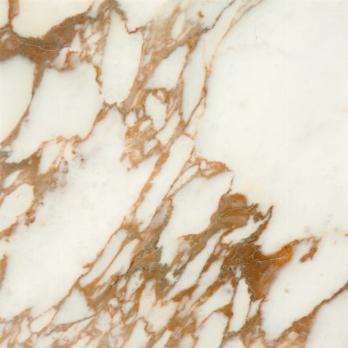Calacata Vagli
marble
Petrografic name (according EN 12407): Marble
Category: calacata
colour: white
Macroscopic description: A marble breccia composed of monogenic clasts that are pure white in colour and range from sub centimetric to pluridecimetric in size with a sub parallel orientation. The clasts have light grey millimetric flecks in places as well as more or less slender amber yellow-coloured veins. Their edges are very distinct and can be straight or slightly sutured. They are immersed in an abundant groundmass that is golden yellow verging on brown in colour.
Technical data provides a frame of reference only. As stone is a product of nature, up to date testing to determine specific physical qualities should be repeated for each major project. We decline any responsability for the mis-use of this data, since said data is sourced from the quarry.
Physical mechanical characteristics
| STANDARD | U.M. | MEAN VALUE | ST. DEV. | |
 EN 13755-08 EN 13755-08 |
Water absorption at atmospheric pressure | % | 0,14 | 0,01 |
 EN 1936-07 EN 1936-07 |
Apparent Density | KG/m3 | 2710 | 4,1 |
 EN 1936-07 EN 1936-07 |
Open porosity | % | 0,4 | 0,03 |
 EN 12372-07 EN 12372-07 |
Flexural strength | |||
| (in natural conditions) | MPa | 18,2 | 1,6 | |
| (EN 12371-03 exposed to 48 frost cycles | MPa | 13,9 | 3,2 | |
 EN 1926-07 EN 1926-07 |
Uniaxial compressive strength | MPa | 99,2 | 18,5 |
 EN 14231-04 EN 14231-04 |
Slip resistance (honed finishing) | |||
| (dry) | USRV | 69 | 2,6 | |
| (wet) | USRV | 33 | 1,6 | |
Block and slab characteristics
Slabs are preferably cut against the grain and perpendicular to the grain, i.e. the hard way and the easy way, yet vein cuts are also common.
 Cutting of blocks
Cutting of blocks  Surface lavoration
Surface lavoration
 Cutting of blocks
Cutting of blocks  Surface lavoration
Surface lavoration
Microscopic description according to EN 12407 e EN 12460
| A crystalloblastic metamorphic lithotype with an anisotropic structure. The clasts are composed of anhedral calcitic blasts that are interlobed, flattened, iso-oriented and evenly sized and can reach up to 250 Ám (although most crystals are approximately 60 Ám). Inside the mosaic are frequent nodules that are sometimes plurimillimetric (< 7 mm) and are composed of crystals of a relict appearance that are anhedral and interlobed of an average size of around 300 Ám. The crystals are particularly clouded by microgranulations of opaque minerals in the most external corona, while in the central part they are deformed and sometimes associated with quartz. Around the clasts are veins that are sometimes irregular in pattern composed of abundant opaque minerals including limonitic oxides, calcitic blasts (< 400 Ám) and rhombic dolomitic blasts. |




